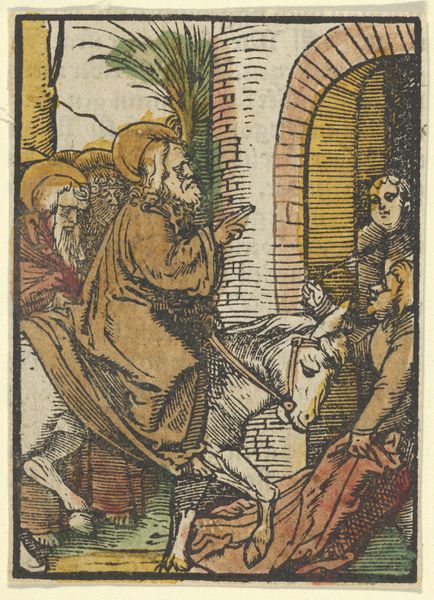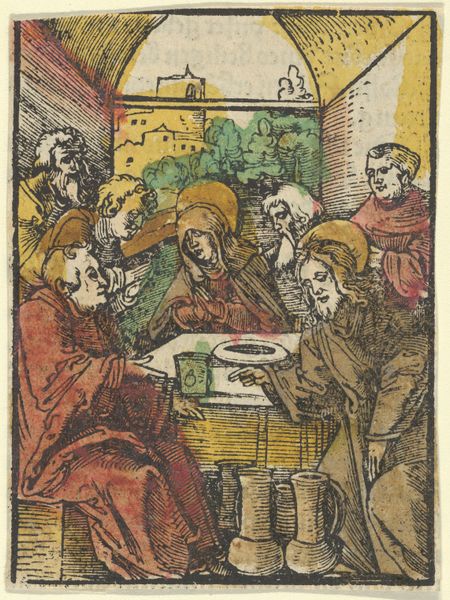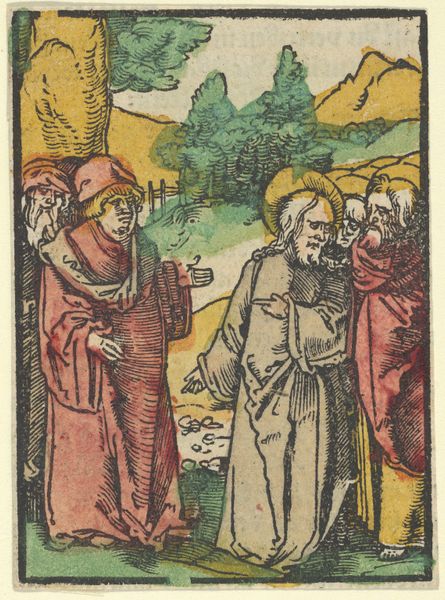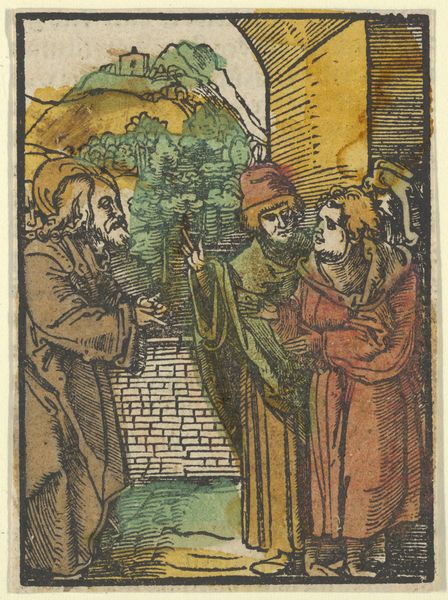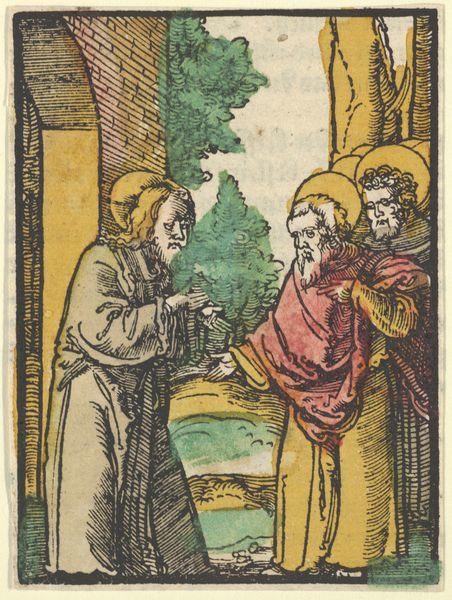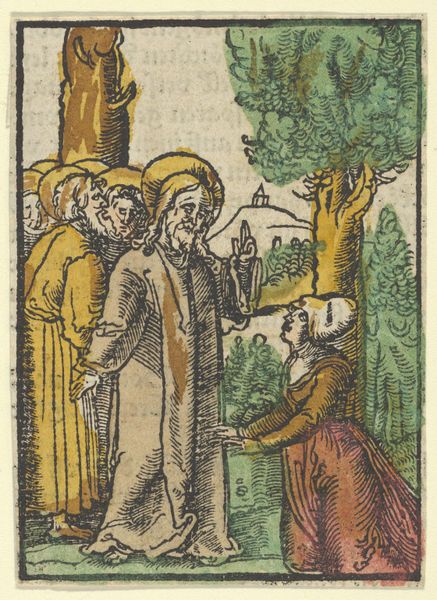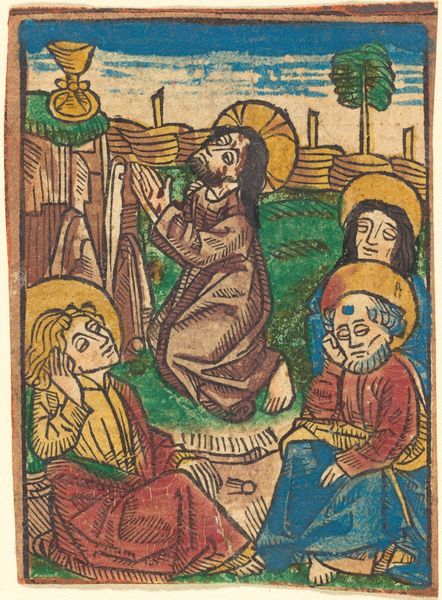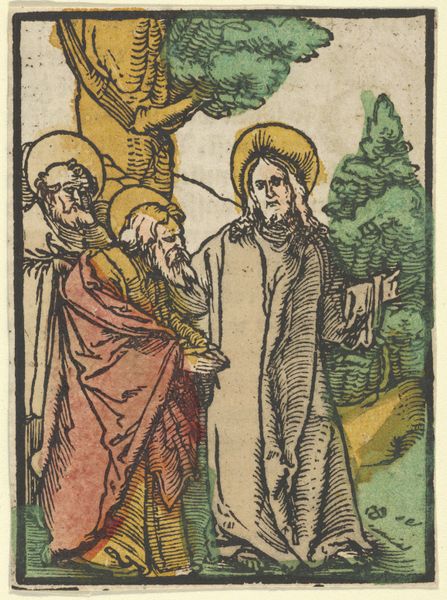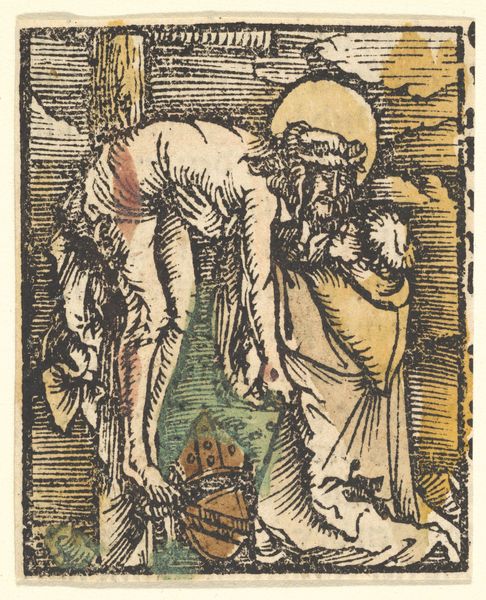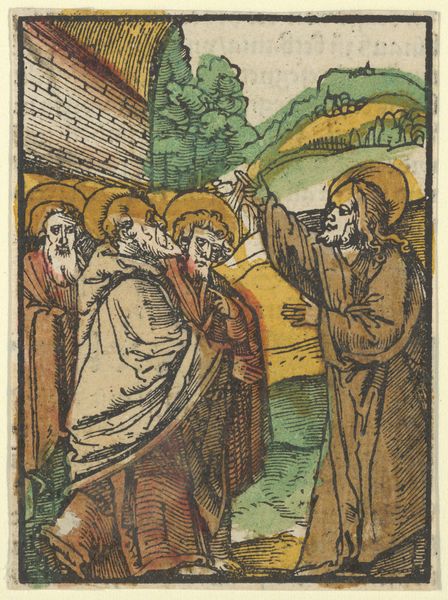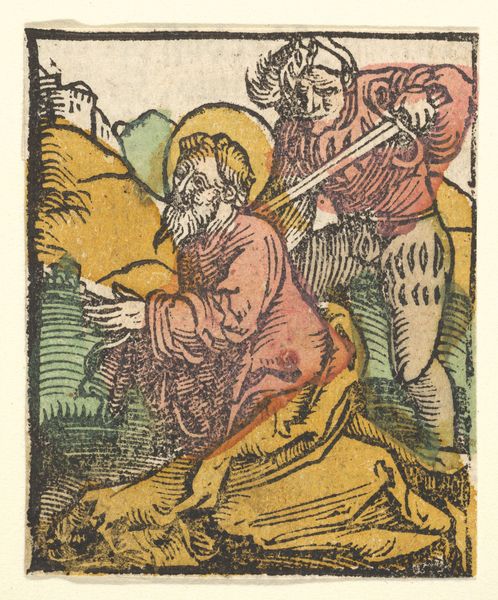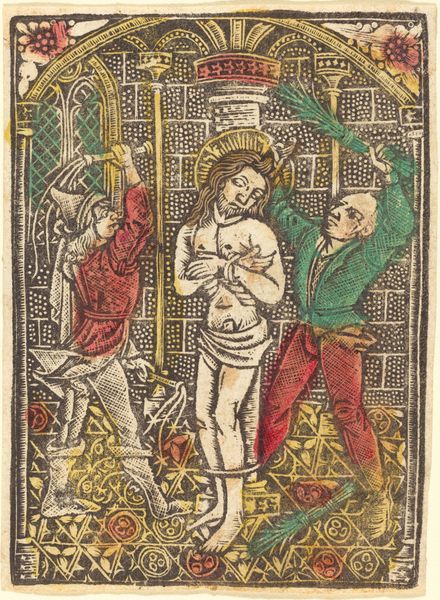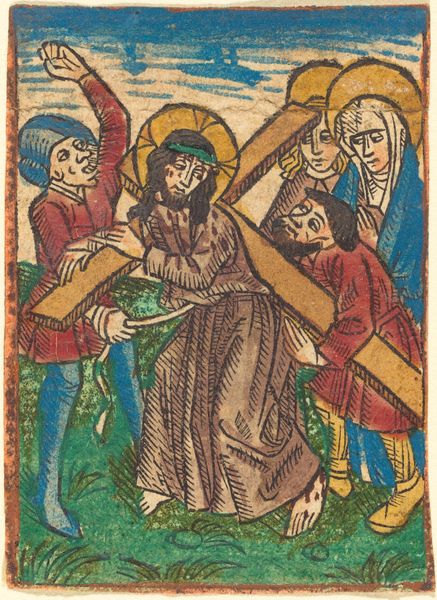
drawing, print, woodcut
#
drawing
#
narrative-art
# print
#
figuration
#
woodcut
#
history-painting
#
northern-renaissance
Dimensions: Sheet: 3 11/16 × 2 11/16 in. (9.4 × 6.8 cm)
Copyright: Public Domain
Curator: Here we have "The Feeding of the 5000, from Das Plenarium," a woodcut made around 1517 by Hans Schäufelein. It is currently housed at the Metropolitan Museum of Art. Editor: It's striking how rudimentary the colors are laid down; the scene has the overall atmosphere of a dreamscape. What do you see? Curator: Well, the scene illustrates the miracle where Jesus feeds a multitude with only a few loaves of bread and fish. Notice how the haloed figures are clustered around Christ, indicating their blessed status, while the crowd merges into a faceless mass, a symbol of the common humanity sharing in the divine bounty. Editor: The means of production certainly influenced the visual language here, right? It is clearly a print, a reproducible image made by carving into a block of wood. How might the act of carving dictate what the work looks like? The baskets in the lower right, for instance, really jump out to me because of the intense textures achieved in the process. Curator: Absolutely. The linear quality inherent to woodcut translates into highly stylized drapery and simplified facial features. Also consider the context. This piece was intended for "Das Plenarium," a book containing readings for the liturgical year. Schäufelein's graphic style served to both illustrate and simplify the theological concepts for a broad audience. It becomes an effective visual shorthand, reinforcing familiar narratives. Editor: Right. Thinking about the consumption of this image further... the very act of producing the same scene over and over surely shifted how the message itself was received? Curator: I believe so. Printmaking democratized access to religious imagery, breaking from the monopoly of illuminated manuscripts. Yet I am also struck by how the artistic choices tap into deeply ingrained cultural codes. The act of communal sustenance underscores the significance of faith and collective well-being within society. Editor: Seeing that interplay between the raw material and the artist's hand against the context and symbolism... It highlights the intricate connections between art, labor, and the way societies seek meaning. Curator: A truly rewarding convergence. Editor: Indeed. Thank you for those insights.
Comments
No comments
Be the first to comment and join the conversation on the ultimate creative platform.
